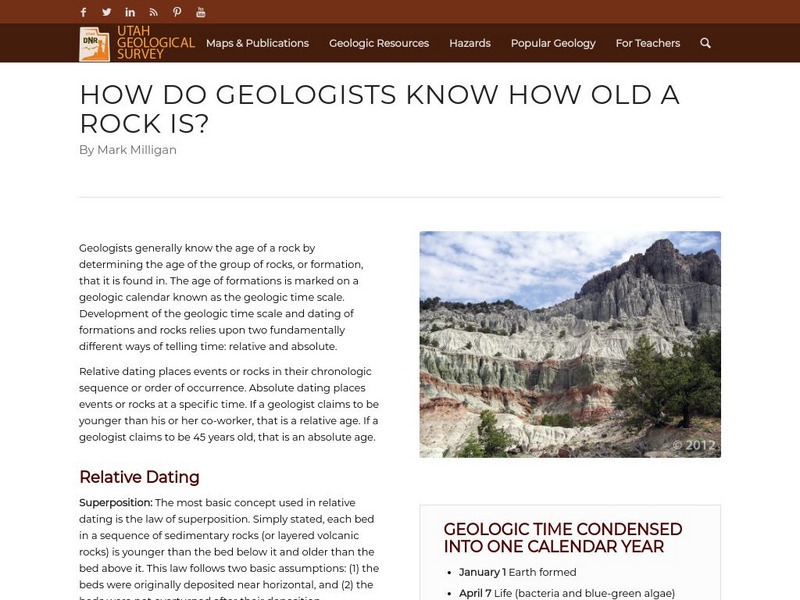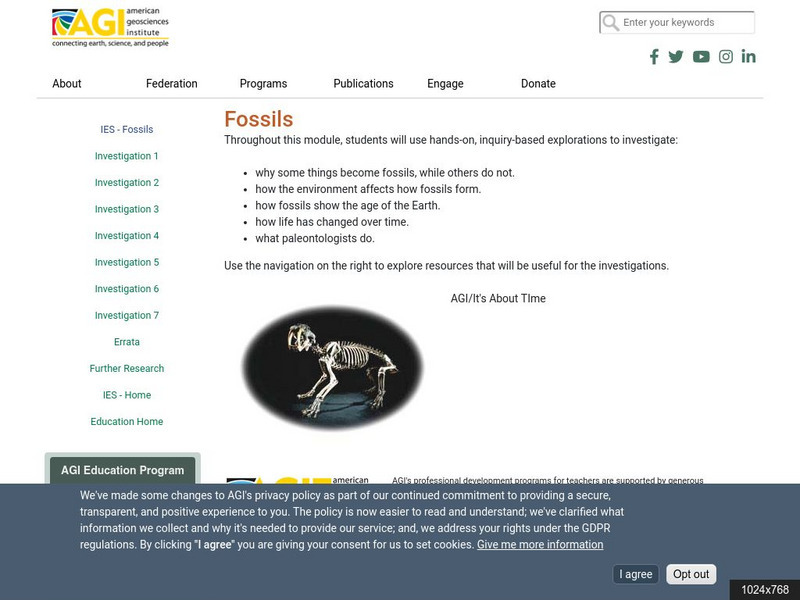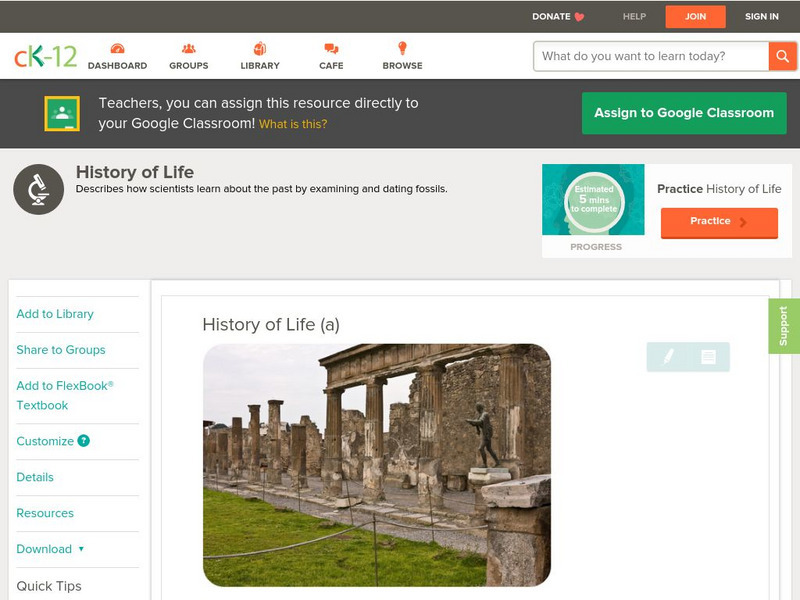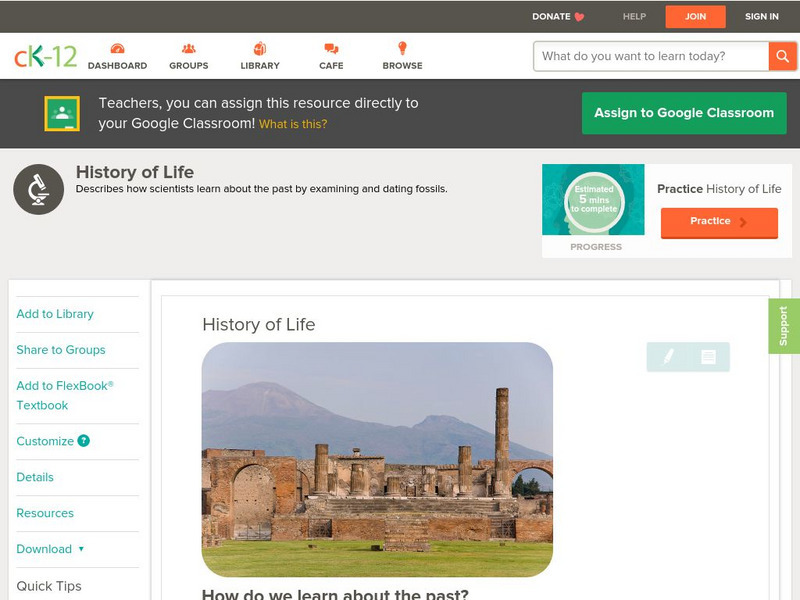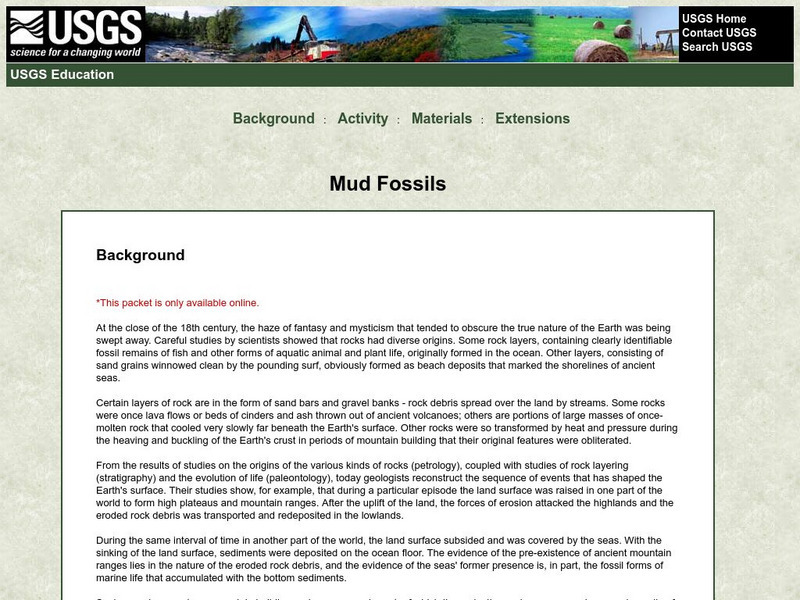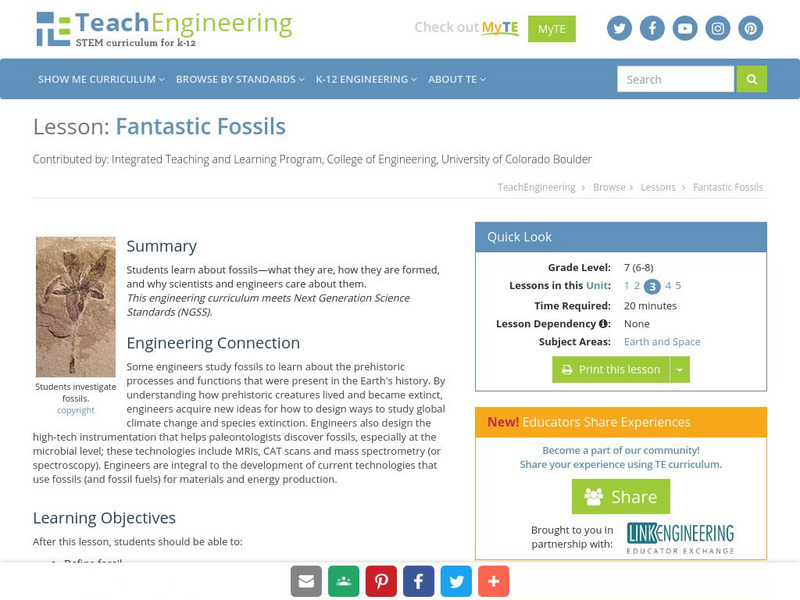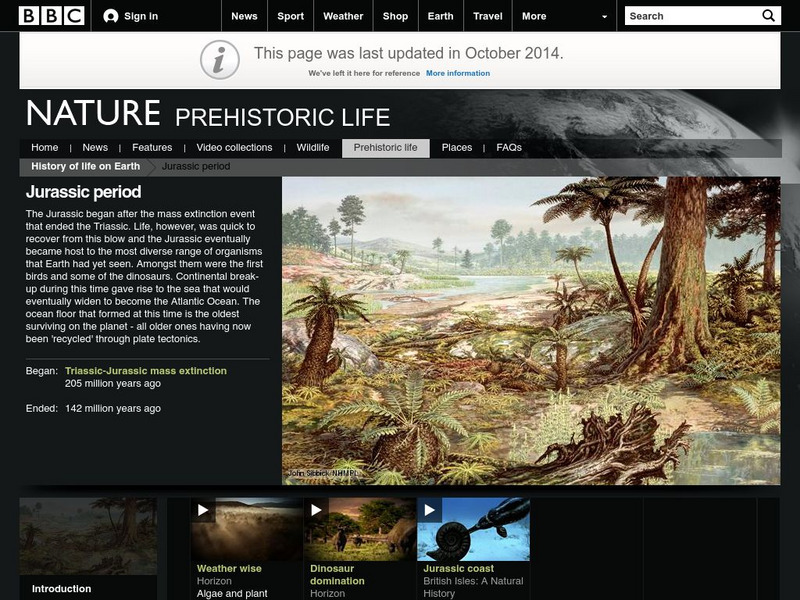Hi, what do you want to do?
US Geological Survey
Usgs: Fossils and Rocks
Part of an online publication offered by the U.S. Geological Survey, this articles sheds light on how studying fossils became an important part of understanding geologic time.
Smithsonian Institution
National Museum of Natural History: Paleobiology: Geologic Time: Hadean Eon
Journey into the past while reading this comprehensive overview of the Hadean Eon that covers topics such as the formation of the earth, its surface and atmosphere, fossil evidence, erosion and plate tectonics.
Other
Utah Geological Survey: How Do Geologists Know How Old a Rock Is?
Geologists generally know the age of a rock by determining the age of the group of rocks, or formation, that it is found in. The age of formations is marked on a geologic calendar known as the geologic time scale. Development of the...
American Geosciences Institute
American Geosciences Institute: Fossils
Seven hands-on lessons module where students learn about fossils. These inquiry-based investigations explore how fossils form, properties of fossils, comparing fossils, how they show the age of the Earth, and what paleontologists do.
Science Education Resource Center at Carleton College
Serc: Layer Cake Geology
Using a cake analogy, this activity teaches concepts such as: geologic time, rock layers, fossils, Law of Superposition, and relative dating. Activity can be modified to grade level and appropriate content for students,
University of Oxford (UK)
Oxford University Museum of Natural History: The Learning Zone: Fossils
This excellent website walks students through the basics of understanding fossils. It emphasizes that most common fossils would be invertebrates and, after learning more about these life forms, students can choose to take a quiz. The...
Other
Black Hills Institute of Geological Research: All About Fossils
The Black Hills Institute of Geological Research is a world-renowned center for paleontology. Here they describe in clear language how fossils are formed and preserved, and what information they give us about the past, particularly in...
Georgia Department of Education
Ga Virtual Learning: Historical Geology
In this interactive tutorial you will explore how geologists use clues in rocks to determine the order in which rocks formed. Learn how principles of radioactivity are used to assign actual ages to rocks. Students will explore fossils...
Curated OER
National Park Service: Fossils in Time Unit
For this lesson, students learn about the earth's past by studying clues that have been left behind, such as fossils and rocks. Students will find the answers to many questions: What is paleontology?, What is geological time?, What can...
ClassFlow
Class Flow: Life & Geologic Time
[Free Registration/Login Required] This Flipchart accompanies chapter 14 in the Glencoe Earth Science text. The flipchart contains pictures that help students learn about Geologic time: Paleozoic, Mesozoic, Cenozoic and explains...
University of California
Ucmp: Online Exhibits
Visit the virtual exhibits at this site to learn more about paleontology, the history of the earth, and life on earth. Use the information on this site to understand geology, geologic time, evolution, and phylogeny.
US Geological Survey
Relative Time Scale
This is a good resource for anyone who wants to understand the historical development that led to our understanding of relative dating. This site also has links to index fossils and a table of geologic time.
Other
American Coal Foundation: Lesson Plan: How Was Coal Formed?
Two-part lesson in which students learn about when and how coal was formed. They will do research on geologic time frames and order them by eon, era, period, or epoch.
CK-12 Foundation
Ck 12: Biology: History of Life
[Free Registration/Login may be required to access all resource tools.] Describes how scientists learn about the past by examining and dating fossils.
American Geosciences Institute
American Geosciences Institute: How Do Species Change Over Geologic Time?
Find out about the ways that species change and evolve over time and generations.
Science Education Resource Center at Carleton College
Serc: Geo Logic: Lagerstatten and Unique Fossils
With GEOLogic questions, young scholars are asked to match several unique fossils with the sites and locations where they were found, as well as their geologic age.
CK-12 Foundation
Ck 12: Biology: History of Life
[Free Registration/Login may be required to access all resource tools.] This comprehensive lesson by CK-12 explains how scientists learn about the past by examining and dating fossils.
US Geological Survey
U.s. Geological Survey: Mud Fossils
Two part lesson allows for students to observe real fossils then make and recover their own fossils using mud.
TeachEngineering
Teach Engineering: Fantastic Fossils
Students learn about fossils - what they are, how they are formed, and why scientists and engineers care about them.
Science Buddies
Science Buddies: Sorting Out Sedimentation
Sedimentary rock forms in layers that are deposited one after the other over long periods of time. Oftentimes, sedimentary rock contains fossils and other debris that are deposited within the layers. Use this experiment to investigate...
US Geological Survey
The Numeric Time Scale
This is a good source for getting an in-depth description of using radioactive decay to measure the ages of rocks. In addition to describing the process of radiometric dating, this resource also includes a geologic time scale and four...
BBC
Bbc Nature: Prehistoric Life: Jurassic Period
Overview of the Earth in the Jurassic Period told by photos, news, videos, and external links with emphasis on what grew then, what lived then, the causes of mass extinction, types of fossils, and what life was like in general.
BBC
Bbc Nature: Prehistoric Life: Triassic Period
Overview of the Earth in the Triassic Period as told by photos, news, and external links with an emphasis on what grew then, what lived then, the causes of mass extinction, types of fossils, and what life was like in general.
Other
Bio Web Evolution: Homepage
This site from BioWeb Evolution was originally created as a ThinkQuest entry, and it has some good basic information about evolution. This page is on fossils and geologic time.







